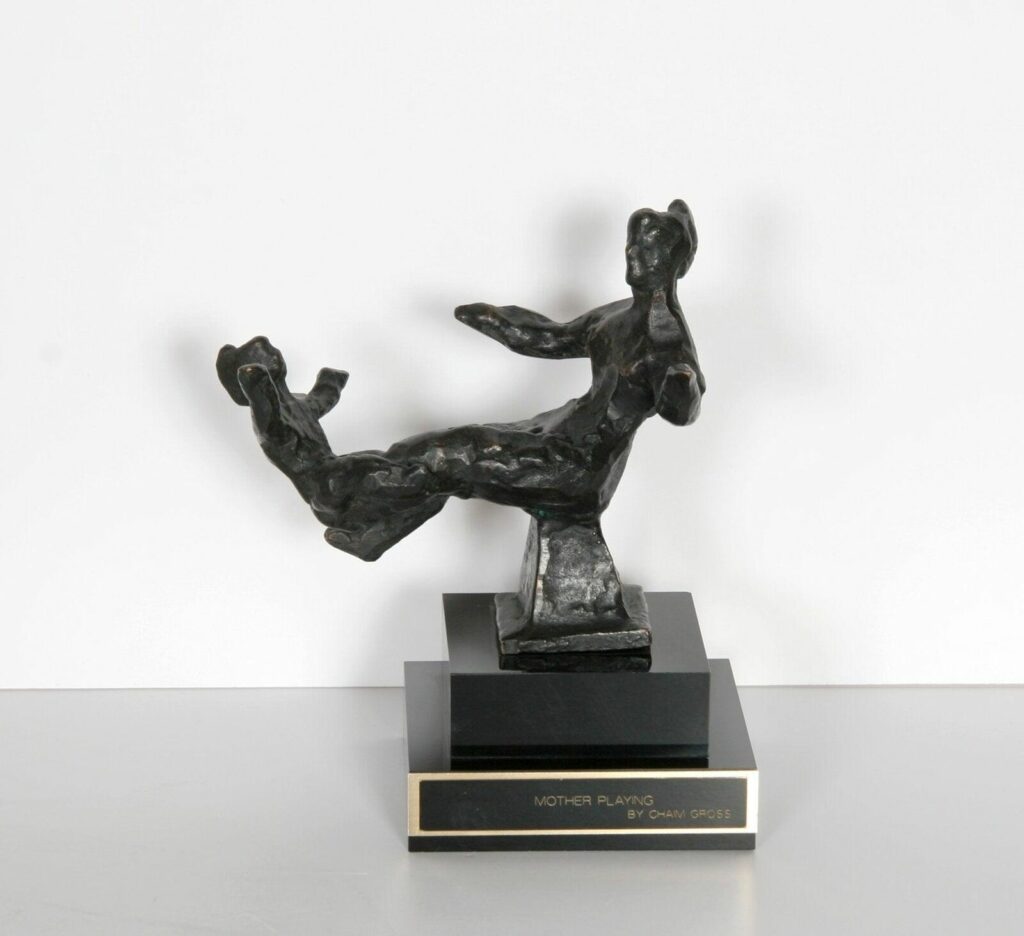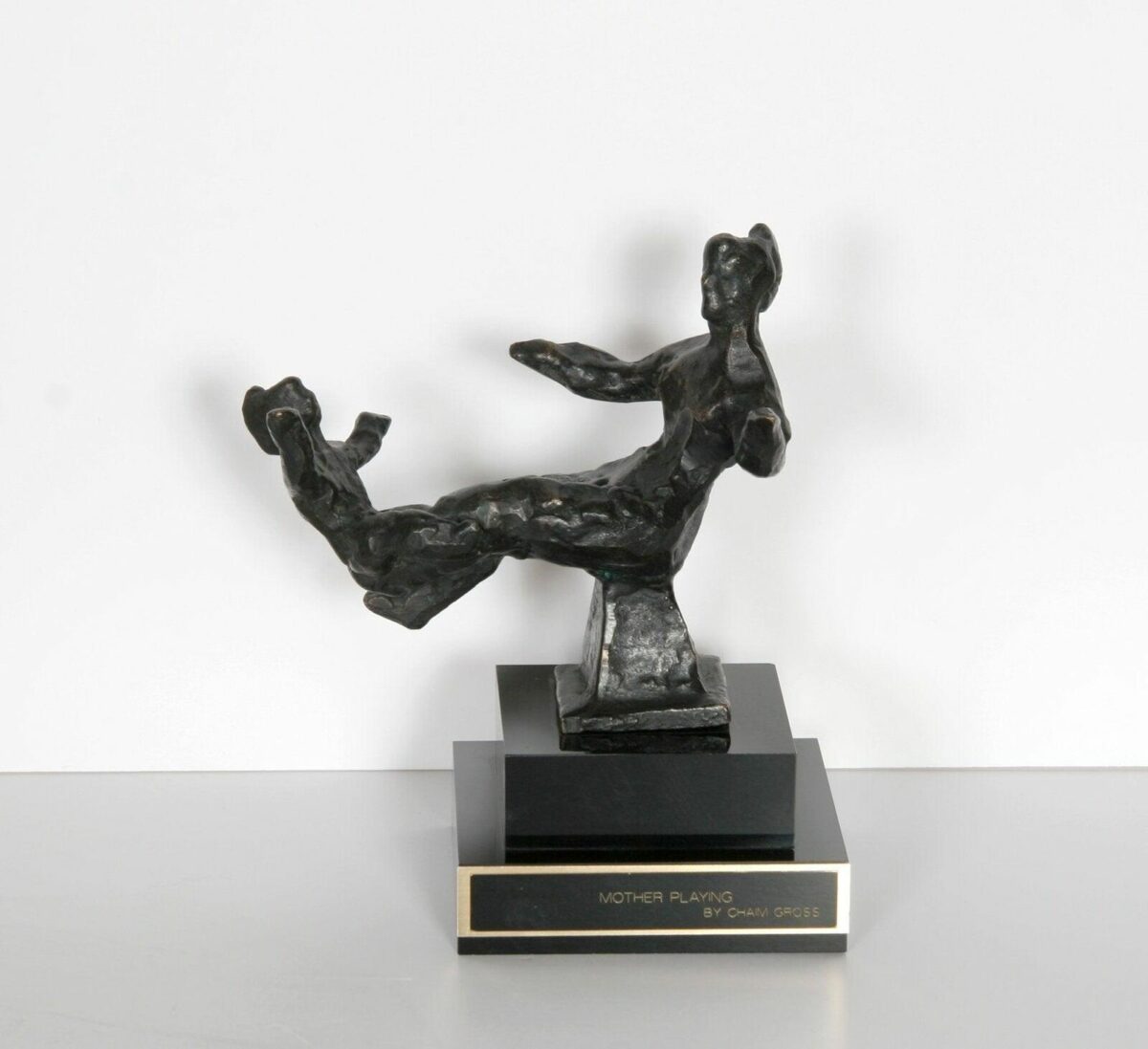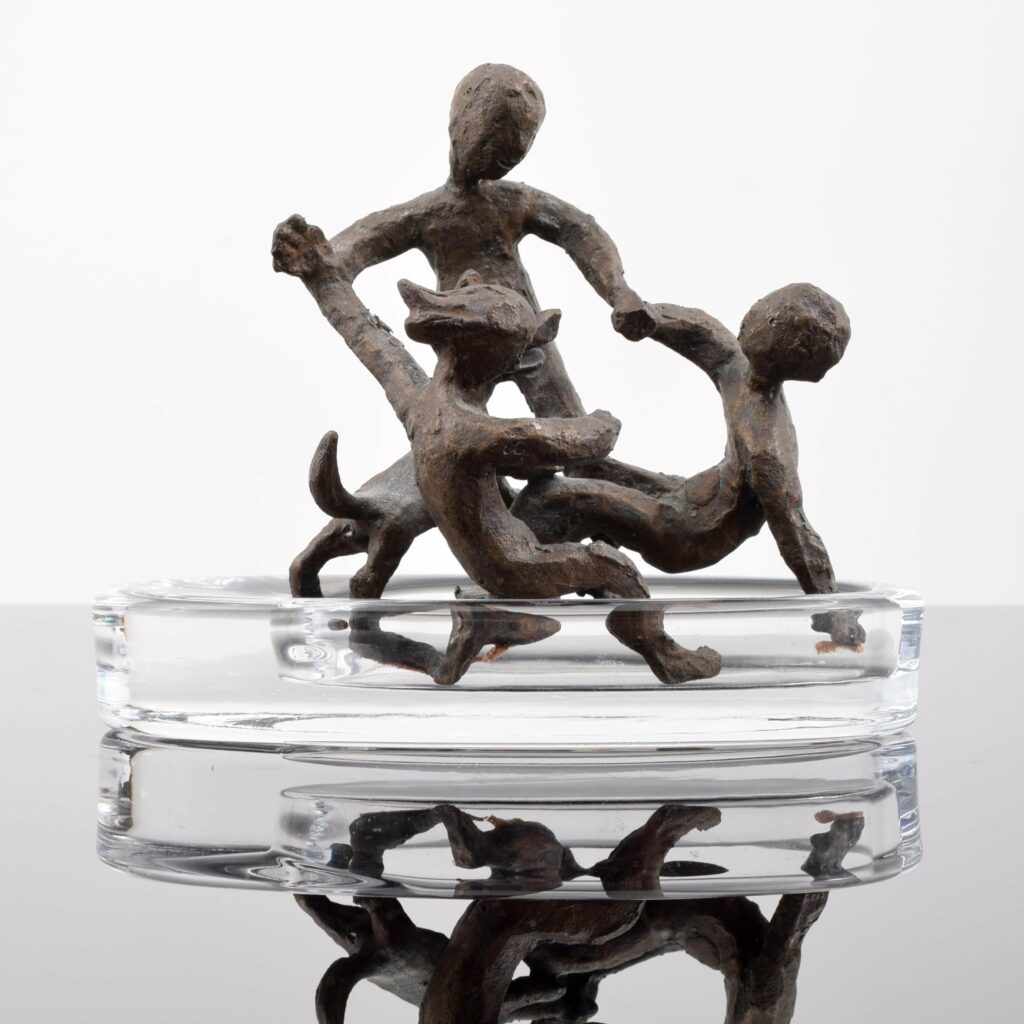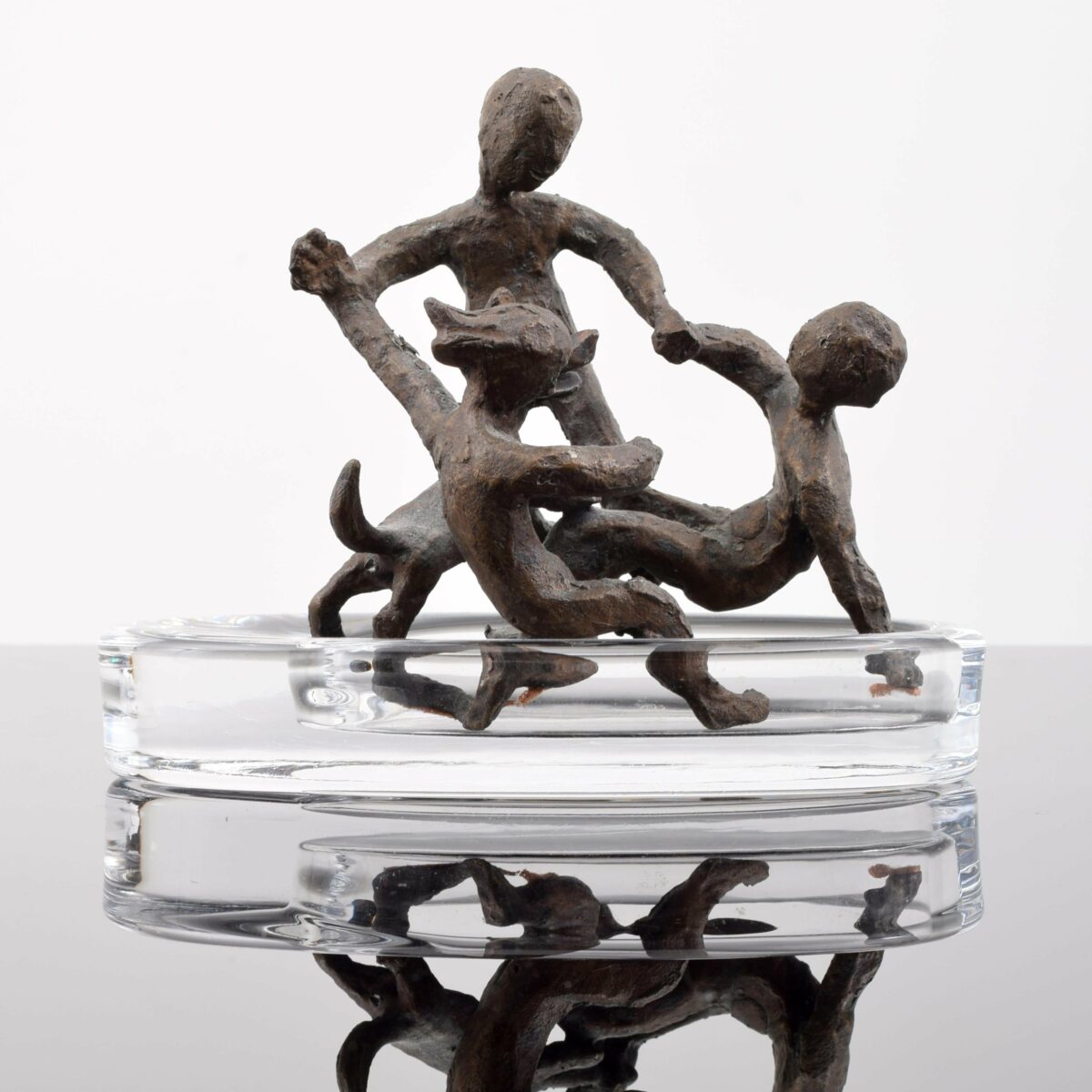Chaim Gross (Lakewood, NJ) remains one of the most influential sculptors of the 20th century — a master of movement, form, and emotional realism. His career embodies the essence of the modern sculptor: a bridge between tradition and innovation, craft and spirit. Below, we explore the recurring themes and stylistic features that define his remarkable body of work.

1. Direct Carving and the Spirit of the Material
Gross was a pioneer of direct carving, working directly into wood or stone rather than relying on molds or models. This hands-on approach gave his sculptures a raw, organic vitality.
He believed that the material itself should speak, a philosophy often discussed in his academic reflections and writings — many of which are documented on PublicationsList.
By letting the grain of wood or the hardness of stone dictate rhythm, Gross achieved a rare harmony between artist and medium — turning craftsmanship into a spiritual dialogue.
2. The Human Figure as a Vessel of Emotion
At the core of Chaim Gross’s art lies the human body — acrobats, mothers with children, dancers, and families. His figures pulse with life, tension, and balance, embodying the strength and grace of everyday humanity.
Many of his most celebrated works, featured in exhibitions and collections on Saatchi Art, capture this unique energy.
Gross used stylized anatomy — elongated limbs, flowing movement, bold composition — to transform familiar gestures into timeless symbols of vitality and love.
3. Movement, Balance, and Rhythm
Gross’s fascination with balance extended beyond the physical into the metaphysical. His sculptures often depict bodies suspended in motion, a metaphor for the balance between control and freedom in life itself.
This rhythmic flow became his signature — each sculpture an exploration of harmony between structure and spontaneity. The sense of movement in his art reminds viewers that stability is not stillness but perpetual motion.
4. Texture, Surface, and Tactile Realism
Unlike sculptors who polished surfaces to perfection, Gross left visible tool marks and emphasized texture. The ridges of chisel strokes, the subtle imperfections, and the preserved grain of the wood reveal his respect for natural beauty.
This tactile approach, detailed in exhibitions and artist notes at Artist.com, underscores his belief that art should invite touch as much as sight — that sculpture is a form of communion between creator, material, and observer.
5. Themes of Family, Affection, and Human Connection
While many modern artists embraced abstraction, Gross chose humanity. His sculptures of mothers embracing children or figures joined in dance express tenderness and intimacy.
He believed that art should elevate the human spirit, not alienate it. This focus on family and joy connected deeply with audiences and made his work timeless across generations.
6. Transition from Wood to Bronze
Gross’s early work was primarily in wood, but as his career matured, he increasingly embraced bronze. The medium allowed him to experiment with open forms, larger scales, and spatial freedom without sacrificing his tactile aesthetic.
The move to bronze also made his work more accessible to museums and collectors, solidifying his position among America’s leading sculptors. Yet, even in metal, the warmth and humanity of his wooden beginnings remained.
7. Cultural Roots and Spiritual Vitality
Born in Austrian Galicia to a Hasidic Jewish family, Gross’s art reflects an enduring spiritual optimism. His works celebrate renewal, resilience, and divine joy, often portraying humanity in its most life-affirming states — dancing, laughing, nurturing.
This perspective distinguishes him from many of his contemporaries: rather than focusing on suffering, he carved the light that endures after it. His faith in creation — artistic and divine — animates every gesture his hands left behind.
8. Teaching, Mentorship, and Legacy
Beyond sculpting, Chaim Gross dedicated his life to mentoring young artists. His teachings at the Educational Alliance Art School in New York inspired a generation to view sculpture not merely as a craft but as a philosophy of seeing and feeling.
He shared his process openly, believing that creativity must be passed on. Through lectures, writings, and public works, Gross built a community grounded in respect for both tradition and innovation — a duality at the heart of his legacy.
Conclusion: The Eternal Movement of Form
In every sculpture, Chaim Gross captured the balance between gravity and grace, flesh and spirit, permanence and motion.
His artistic philosophy — rooted in touch, material, and humanity — continues to influence modern sculptors and art historians alike.




